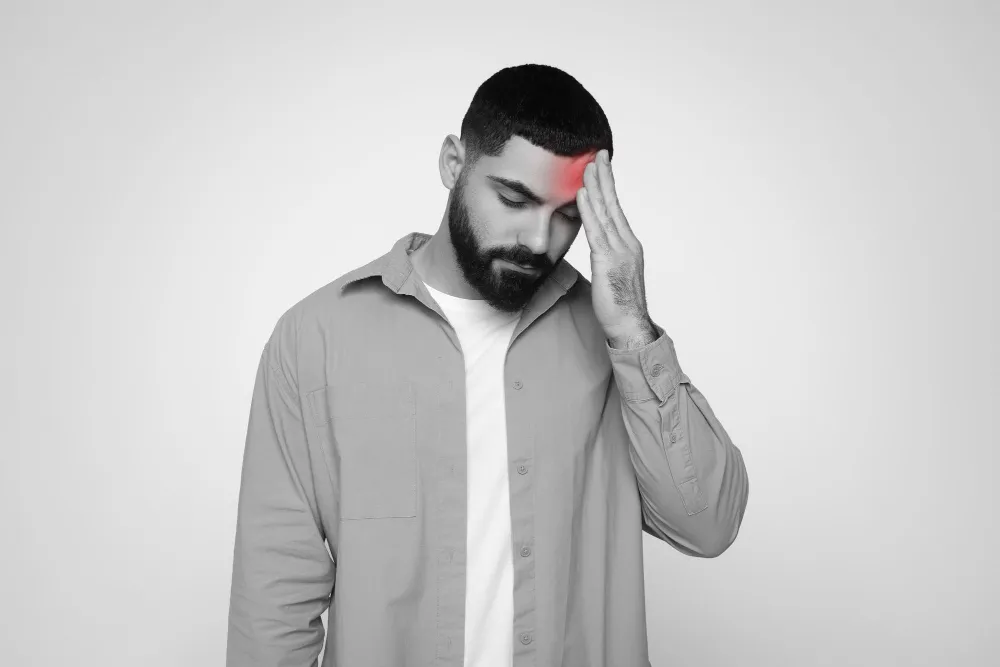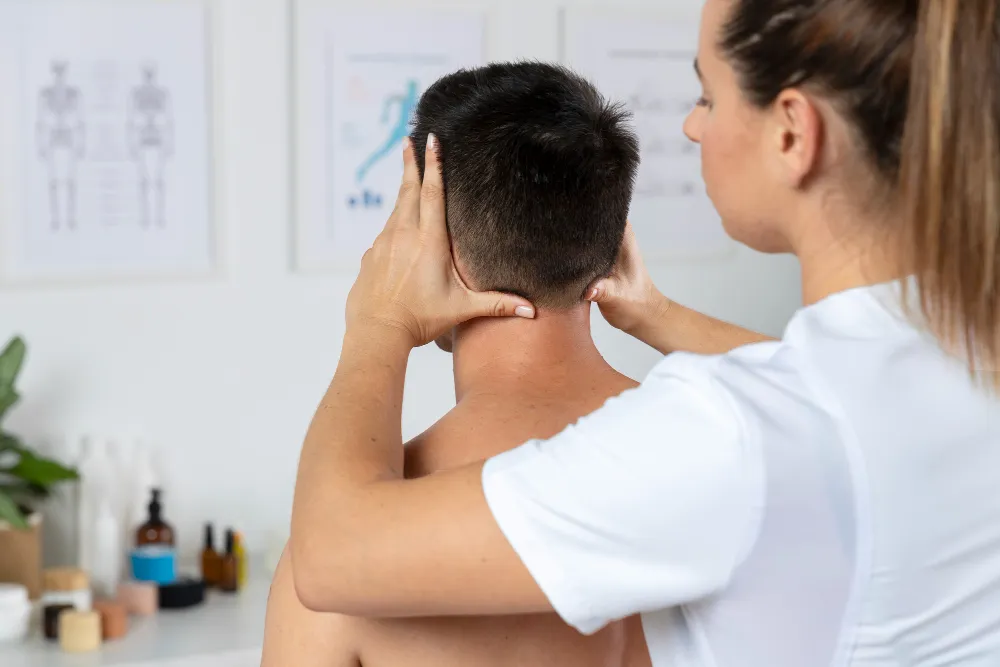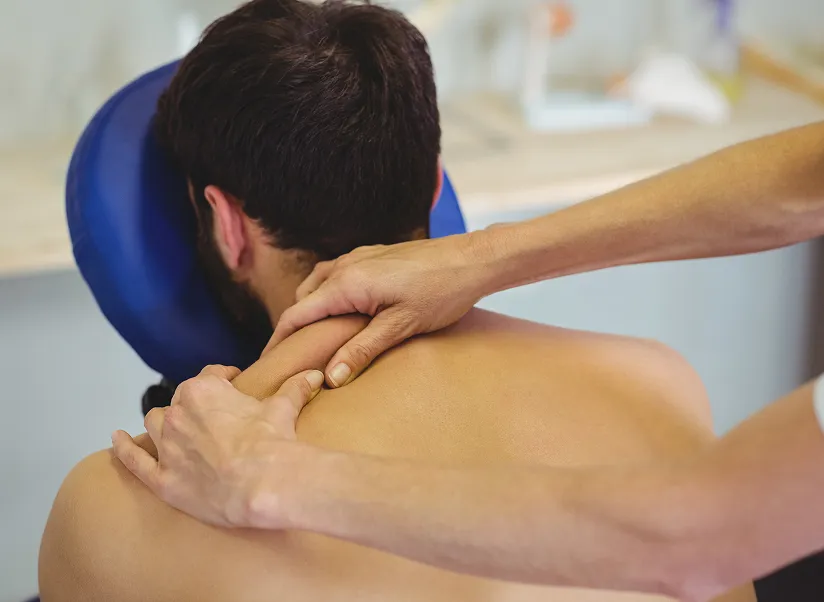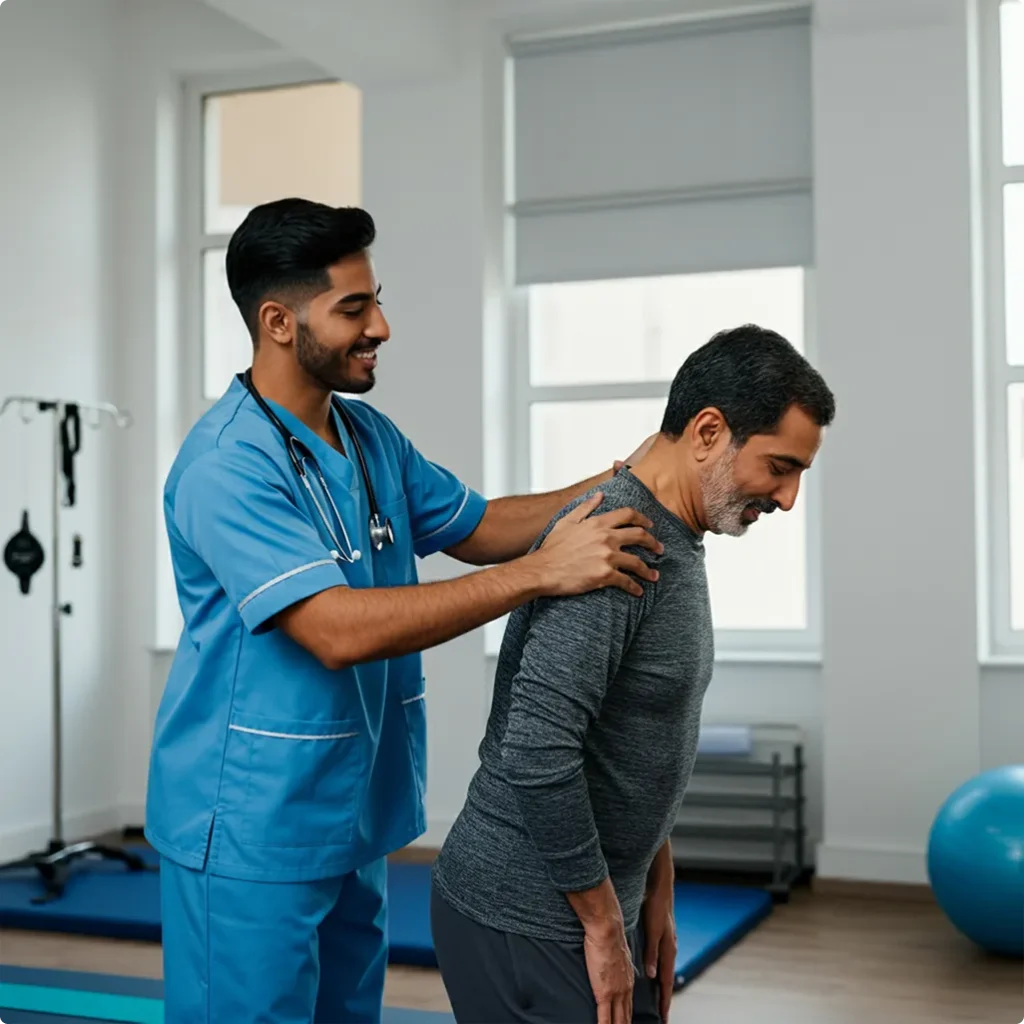Cervicogenic Headache Treatment in Dubai
If your headaches start at the base of your skull or radiate from your neck, physiotherapy can help. Get expert care through personalized treatment.
DHA Licensed Team
One-on-one Care
Advanced Facilities
Personalized Cervicogenic Headache Treatments
Many persistent headaches actually originate from the neck and upper spine — known as cervicogenic headaches. These headaches often worsen with posture, screen time, or after waking up, and don’t respond well to typical headache medications.
At Physioveda, we offer specialized cervicogenic headache treatment in Dubai focused on correcting the root cause: tension, misalignment, or dysfunction in your cervical spine.


Benefits
- Helps in reducing headache frequency and intensity
- Supports neck stiffness and muscle tension relief
- Helps to improve posture and spinal alignment
- Addresses underlying cause, not just symptoms
- Drug-free and non-invasive
- Supports long-term headache prevention

Our Approach to Cervicogenic Headache
We begin with a detailed assessment of your neck mobility, posture, and movement patterns. Treatment may include:
- Manual therapy to release tight neck and shoulder muscles
- Joint mobilization for cervical spine alignment
- Postural retraining to correct forward head posture
- Stretching and strengthening for neck and upper back muscles
- Trigger point release for referred pain relief
- Ergonomic advice and workstation correction
Contact
Book Your Appointment
Have questions or need to book an appointment? We’re here to help.

FAQs
Frequently Asked Questions
How do I know if I have a cervicogenic headache?
If your headache starts in the neck or back of the head and is worsened by neck movement or poor posture, it may be cervicogenic. Our assessment will help confirm it.
How many sessions do I need?
Most people start to feel improvement within 3–5 sessions, with continued results through a tailored home exercise program.
Do I need an MRI or scan first?
Not necessarily. If we suspect something beyond musculoskeletal causes, we’ll advise you on the appropriate next steps.
Do you offer cervicogenic headache treatment at home in Dubai?
Yes, we provide at-home cervicogenic headache treatment in Dubai.
Our Physiotherapy Treatments in Dubai
Musculoskeletal Physiotherapy | Neurological Physiotherapy | Sports Physiotherapy | Post-Surgery Rehabilitation | Posture Correction and Ergonomics | Women’s Health Physiotherapy | Geriatric Physiotherapy | Pediatric Physiotherapy | Back Pain Treatment | Neck Pain Treatment | Knee Pain Treatment | Shoulder Pain Treatment | Ankle & Foot Pain Treatment | Cervical Spondylosis Treatment | Plantar Fasciitis Treatment | Carpal Tunnel Syndrome Treatment | Sports Massage | Dry Needling | Home Physiotherapy | Tailbone Pain Treatment | Cervicogenic Headache Treatment | Muscle Imbalance Treatment | Parkinson’s Disease Treatment | Frozen Shoulder Treatment | Sciatica Treatment | Chiropractic Treatment | Vertigo Treatment | Homecare Services | Physiotherapy at Home | Elderly Care
Our Medical Services in Dubai
Our Patient Stories
